When it comes to saying “I’m sorry,” the path of communication we choose makes a profound difference. This article explores various heartfelt ways to express remorse and mend relationships. From handwritten letters to meaningful gifts, each method discussed is a testament to the power of personal touch in conveying genuine feelings. The aim is to offer fresh perspectives on apology, emphasizing actions that speak louder than words.
Write a Heartfelt Letter
In an age where emails and text messages are the go-to for communication, receiving a handwritten letter feels like a treasure unearthed from another time. There’s something exceptionally heartwarming and personal about it. Think about it; someone took the time to sit down, pull out a pen, and pour their thoughts onto paper, just for you. This act in itself, choosing pen and paper in a digital world, screams “You’re special to me.”
First off, a handwritten letter carries with it the unique imprint of the sender – their handwriting. Each loop, line, and curve in those written words is a piece of them, almost as if they’re right there with you. It’s a personal touch that no font on a screen can replicate. You can almost hear their voice, feel their mood through the pressure of the pen on the paper. It’s like a hug in letter form.
Then, there’s the effort and thoughtfulness aspect. Crafting a letter isn’t as quick as typing out a message and hitting send. Someone took time out of their day, thought carefully about what they wanted to say, and how to say it. They might have even restarted a time or two to get it just right. This patience and dedication show a level of care and respect that’s hard to come by.
Also, let’s not forget the excitement and anticipation that comes with a handwritten letter. It’s not instant – you wait for it, anticipate its arrival. And when it does come, it’s an event. You hold in your hands a piece of another person’s day, thoughts meant just for you. It’s a tangible connection in a world that increasingly feels ephemerally digital.
Handwritten letters also have the power to touch emotions deeply. They can be kept, reread, cherished. Each reading can reignite feelings, memories, bringing back the moment you first opened it. They become keepsakes, part of your personal history. How many emails have made it into the shoebox of keepsakes under your bed?
Lastly, they’re a lasting legacy. Long after we’re gone, our written words can live on. They capture a moment in time, an emotional state, a piece of history. They can be a comfort and a treasure for those we leave behind, in a way that digital communication rarely can.
In a nutshell, a handwritten letter is a beautiful rarity that speaks volumes. It’s a declaration of value, of taking the pause in our hurried lives to connect deeply with someone else. It’s a small rebellion against the instant, often superficial ways we interact, choosing instead something lasting and genuinely meaningful. So, next time you want to make a lasting impression or show someone they’re truly valued, consider putting pen to paper; it could mean the world to them.

Plan a Thoughtful Surprise
In our fast-paced world, where online interactions often replace face-to-face conversations, the art of giving speaks volumes. Imagine the surprise and sheer joy of discovering a carefully planned secret scavenger hunt, tailored just for you, by someone looking to mend a rift. This isn’t just any scavenger hunt; it’s peppered with memories, inside jokes, and heartfelt moments that remind you of the good times. It’s an adventure where each clue not only brings you closer to a cherished prize but also closer to understanding the depths of someone’s feelings and apologies.
There’s something incredibly touching about finding yourself standing before a memory lane, meticulously set up by a loved one. Picture this: photos, mementos, and tokens of friendship arranged with care — each item representing a chapter of your shared history. This personal museum doesn’t just tell a story; it weaves a heartfelt apology without the need for spoken words, showing effort, remorse, and the desire to rebuild bridges.
Now, envision the magic of a custom playlist, each song a melody of apologies, forgiveness, and hope. Music has the unique power to transport us, to soothe the soul, and to speak directly to our hearts. A playlist curated with the intention of healing can bring tears, smiles, and even a newfound understanding. It’s an auditory journey through the highs and lows of your relationship, culminating in a hopeful note for the future.
Lastly, ponder the warmth of a surprise dinner, not at any restaurant, but at a place brimming with nostalgia. Maybe it’s where you first met, or a spot that witnessed your laughter and tears. It’s the setting for an evening where the menu features favorite dishes, memories, and earnest conversations. This dinner becomes a sanctuary where past grievances can be laid to rest over shared bread, where the act of cooking and dining together serves as a powerful reminder of the bond that once was unshakeable.
In each of these acts of thoughtful surprise, there’s an underlying message: “I care enough to understand, to remember, and to try.” This isn’t about grand gestures or expensive gifts, but about the willingness to invest time and emotion into healing a rift. These surprises speak a language of love, regret, and the hopeful chances of tomorrow. They show that even when words fail, actions can sing volumes, crafting pathways to forgiveness and renewed connections.

Give a Meaningful Apology Gift
Why might a meaningful gift be a good way to apologize? Well, let’s dive right into it, shall we?
First off, a meaningful gift acts as a tangible demonstration of remorse. It’s like saying, “I messed up, but I want to make things right.” It’s not just about picking something off a shelf; it’s about choosing or creating something that resonates with the person you’re apologizing to. This effort shows you understand what’s important to them, and you’re willing to put in the work to show it.
Next, imagine the moment of giving the gift. It’s awkward, right? But in a good way. It forces both parties to confront the issue at hand, opening up a channel for honest communication. It’s not just about the apology anymore; it’s about rebuilding the connection that was damaged. That moment of exchange becomes a turning point, a step towards mending what was broken.
Also, let’s talk about making memories. A meaningful gift, especially one tied to a shared experience or an inside joke, isn’t just an apology; it’s a bridge to happier times. It serves as a reminder that, despite the current hiccup, there’s a foundation worth salvaging. It’s like saying, “Remember how great we are together?” It reignites the joy that might have been temporarily overshadowed by the conflict.
And here’s something we often overlook – the impact of the gift over time. A well-thought-out gift isn’t just for the moment. It lingers, physical proof that lessons were learned and feelings matter. Every time they see or use the gift, it’s a reminder of the effort you put into making things right. It’s proof that actions were taken beyond just words, reinforcing the sincerity behind the apology.
Lastly, choosing a meaningful gift as a way to apologize demonstrates a willingness to invest in the relationship. It says, “You’re worth this effort.” It acknowledges the hurt caused and shows a commitment to not just moving past the issue but growing from it. This level of care and dedication is what true apologies are made of.
When it comes right down to it, apologizing through a meaningful gift isn’t about the item itself. It’s about acknowledging the mistake, taking responsibility, and doing something genuinely thoughtful to express your remorse. It’s a heartfelt gesture, packed with emotion and sincerity, aiming to heal and strengthen the bond between you and the person on the receiving end.

Recite a Personal Apology Poem
In the world of apologies, where sincere sentiments bridge the gaps that misunderstandings create, poetry emerges as a profound tool, weaving a tapestry of feelings, acknowledgement, and a promise to mend what’s been torn. Let’s explore how this artistic expression enriches the soulful task of saying “I’m sorry.”
Imagine the luxury of words, carefully selected, composing verses that dance to the rhythm of your deepest regrets and highest hopes. Poetry has this unique ability to distill emotions, presenting them in their purest form. Where a simple apology might skim the surface, poetry dives deep, revealing the layers of your remorse and the earnestness of your wish to make things right.
Consider the magic in metaphors and similes, where sorrows are likened to stormy seas and promises of change to dawn’s first light. Such imagery does more than paint a picture; it invites the receiver of your apology into your emotional landscape, allowing them to see through your eyes, feel with your heart. This shared experience is what turns a mere apology into a profound connection.
Timing in poetry, much like in apologies, is everything. The rhythm, the pause between lines, the quiet space after a potent metaphor—all serve to give the recipient time to absorb, reflect, and understand the depth of your sentiments. Just as the silence between musical notes makes the melody, the spaces in poetry breathe life into your apology, making it resonate more deeply.
Emotion is the lifeblood of poetry, channeling raw feelings into a structured form that can be powerfully evocative. When saying “I’m sorry,” embedding your apology within the emotional richness of a poem says, “I feel this deeply.” It’s about showing vulnerability, laying your emotions bare, and demonstrating you’re truly touched by the impact of your actions.
Poetry also immortalizes sentiments. Unlike spoken words that may fade with time, written verse captures your apology for posterity, offering a tangible artifact of your commitment to change and the depth of your feelings. It becomes a keepsake, a reminder of a moment when you bared your soul in the hope of healing a rift.
In the acts of crafting and sharing a poem as an apology, there’s an inherent acknowledgment of the effort involved. It shows you have taken the time to reflect deeply on your actions, to understand the hurt caused, and to seek a genuinely creative and heartfelt way to express your regret. This effort is a gift in itself, enhancing the sincerity of your apology.
Lastly, poetry, with its universal language of emotions, transcends the personal and taps into something greater. It reminds us of the power of words to heal, to bridge divides, and to foster understanding and forgiveness. In the context of an apology, poetry elevates the act from mere acknowledgment of wrongdoing to a shared journey towards reconciliation and understanding.
So next time you seek to add depth to an apology, consider the timeless gift of poetry. Transform your remorse into verses that echo your earnest desire to mend, to grow, and to connect on a level where words, in their simplest form, might fall short. In doing so, you’ll find that poetry isn’t just about arranging beautiful words; it’s about carving a path to the heart, where true apologies live and breathe.
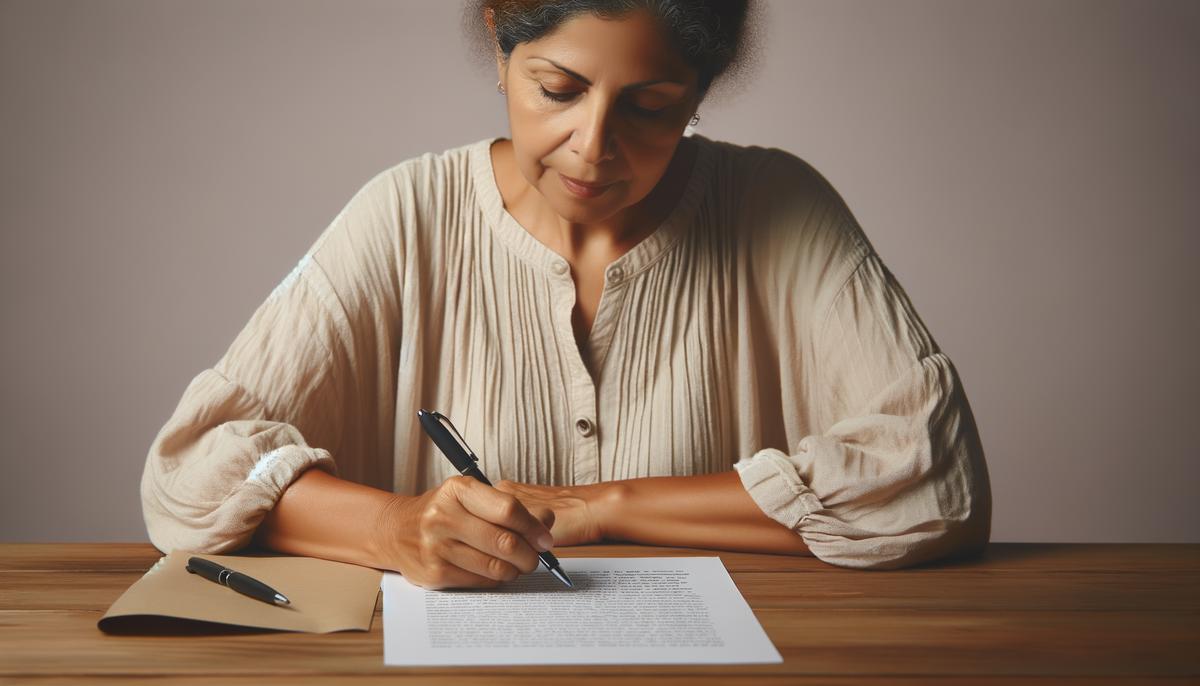
Arrange a Day of Her Favorite Things
When it comes to mending fences and expressing genuine remorse, sometimes only grand gestures fall short, and what truly hits home is a day brimming with her favorite things. This approach may seem simple, but its effectiveness in conveying a heartfelt apology is profound. It’s not just about the items or activities themselves; it’s the message they carry — a testament to how well you know her and a sincere effort to show her she matters.
Imagine starting the day with her favorite breakfast dish, the one she always chooses for a sunny weekend morning. It’s not just breakfast; it’s a reminder of shared moments and the intimacy of knowing her preferences. Follow this with an activity she adores, maybe a visit to her favorite art exhibit or a leisurely walk in the park where she feels most at peace. Each activity, carefully chosen, becomes a chapter in the story of your apology, an acknowledgment of the joy you cherish when she’s happy.
Sprinkle the day with small surprises — her favorite coffee from the little shop she loves, the movie she’s been wanting to see, or a visit to the bookstore where she can browse to her heart’s content. These aren’t just treats; they’re signals that you’re tuned in to what brings her joy.
Ending the day could be as simple as cooking her favorite meal at home, surrounded by the warmth of candlelight, or perhaps a handwritten note expressing your feelings and the desire to move forward, better together. This note, amidst the day’s activities, acts as a gentle yet powerful reminder of your attentiveness and your dedication to repairing the bond you share.
What makes this approach genuinely effective is the underlying thread that connects each of her favorite things — the unspoken apologies, the acknowledgment of past mistakes, and the silent promises to be better. It’s an encapsulation of sentiment, understanding, and willingness to invest in the happiness of someone you hold dear. Through this journey of her favorite things, the sincerity of your apology shines through, paving the way for forgiveness and strengthening the connection that binds you together. Remember, it’s the thought, the effort, and the love that ultimately make a day of her favorite things an unforgettable and effective apology.

Cook Her Favorite Meal
Why cooking her favorite meal is a heartfelt apology goes beyond the simple act of making food. Imagine, after a tiff, instead of just words, you decide to don an apron and head to the kitchen. This isn’t about showcasing your culinary skills or trying out a new recipe from a trendy cookbook. It’s about pouring your heart into every chop, stir, and bake, focusing all your attention on creating something she loves. This meal becomes a tangible expression of your love and remorse, a gesture that says, “I care about you deeply, and I’m sorry.”
First off, it demonstrates attentiveness. Remembering her favorite dish means you listen, you pay attention, and you value her preferences. It’s a reminder of the good times shared over meals, of laughs, and of conversations that seemed to make time stand still. In a way, it’s not just food you’re offering but a scrapbook of shared moments, neatly tucked between the layers of flavors and spices.
Secondly, it requires effort. Apologies can sometimes slip out too easily, becoming automated responses that lack depth. However, taking the time to cook — from selecting the right ingredients to managing the precise timings — shows a willingness to make an effort, to go the extra mile for her happiness. It’s a silent confession that she’s worth every minute spent in the kitchen.
Moreover, it’s an act of vulnerability. Cooking places you in a position where you’re trying to mend fences, not with grandiose gestures but with humble pie (perhaps, quite literally). It’s an acknowledgment of your mistake and an earnest attempt to make amends. This vulnerability can often speak louder than the most eloquent of apologies, bridging gaps that words alone cannot.
Additionally, this act of cooking represents a promise, a subtle vow that you’re invested in making things better. It’s an intimate affair, a quiet evening possibly filled with heartfelt conversations, where the meal serves as a background to your sincerity and open-hearted discussions. It’s not just about filling stomachs but also about healing hearts.
Lastly, sharing a meal you’ve prepared creates a moment of connection, an opportunity to start afresh on a satisfied and happy note. The ambiance isn’t charged with the residue of past arguments but softened by the aroma of her favorite dish, inviting a space for forgiveness and perhaps a gentle reminder of why you cherish each other.
So, why is cooking her favorite meal a heartfelt apology? Because it goes beyond the superficiality of spoken apologies, transforming regret into an act of love, attentiveness, and a desire to mend what’s been broken. It’s a path paved with understanding, commitment, and the hope of a happier, stronger bond moving forward, all served on a plate of her cherished flavors.
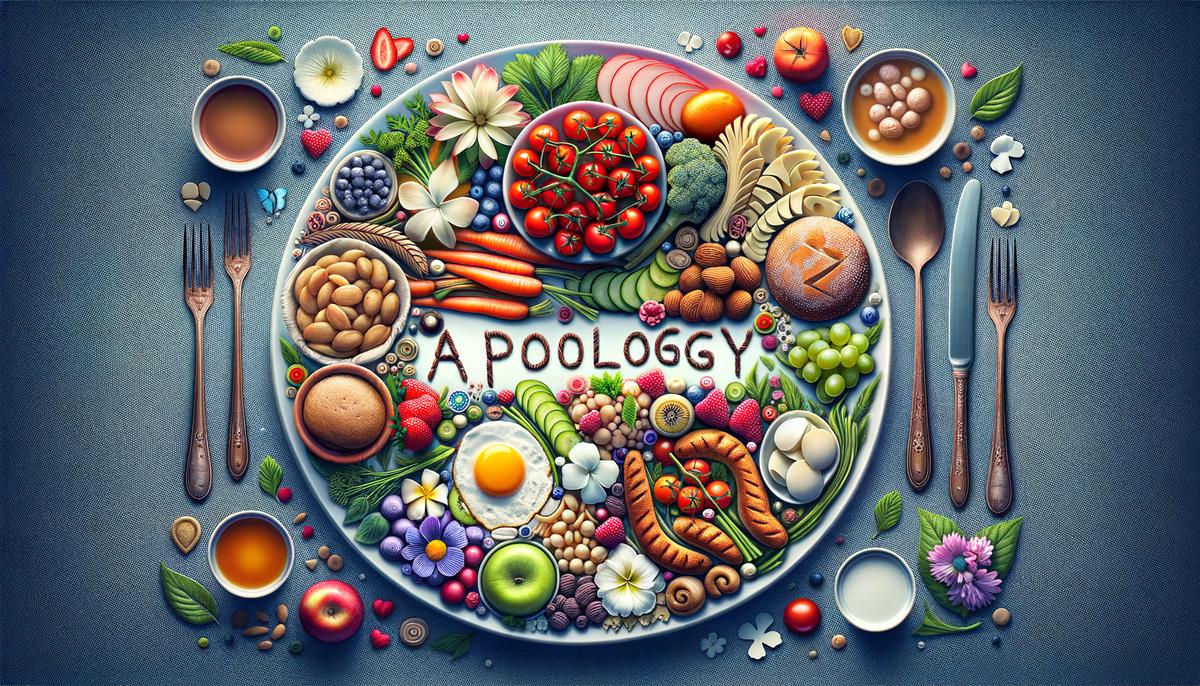
Create a Video Montage
Isn’t it fascinating how in our digital age, we can capture moments, weave them together, and create a narrative that speaks directly to the heart? That’s exactly the magic a video montage brings to the table when it’s time to say “I’m sorry.” Imagine this: each clip, a thread; every snapshot, a patch in the quilt of memories that you’ve shared. It’s not just a compilation; it’s a heartfelt journey through the moments that mean the most.
Now, why a video montage? Well, for starters, it’s a chance to show you’ve taken the time, not just to select moments that resonate but to stitch them together in a way that says, “I remember, I care, I’m sorry.” It speaks volumes of your willingness to dig deep into shared experiences, highlighting the joyous moments that overshadow the temporary rifts.
What’s more, the beauty of a montage lies in its flexibility. Those laugh-out-loud moments at the beach last summer, the goofy dance-offs in the living room, the quiet afternoons spent in each other’s company doing absolutely nothing – they all have a place here. Each clip acts as a reminder of the love and laughter you’ve shared, a testament to the bond you’re looking to mend.
Including your favorite music or those songs that have become unwitting anthems to your relationship adds another layer of personal touch. The right song can elevate the montage from a simple collection of clips to an emotional journey, drawing you both back to the essence of your connection.
And let’s not forget the power of your narrative voice. Overlaying the montage with your words of apology, appreciation, and hope for the future can turn it into a poignant message that’s both personal and powerful. It’s an intimate conversation held not face-to-face but heart-to-heart.
In essence, a video montage serves as a poignant apology because it’s a tangible demonstration of effort and emotion. It shows you’re not just saying sorry; you’re taking a step back, appreciating what you’ve built together, and expressing a genuine desire to move forward, hand in hand. It’s a unique blend of nostalgia and promise, an ode to your past with a hopeful gaze towards the future.
So, when words alone aren’t enough or when you need to add depth to your “I’m sorry,” consider the video montage. It’s not just about replaying memories; it’s about reigniting emotions, rebuilding bridges, and reminding each other why what you have is worth fighting for.
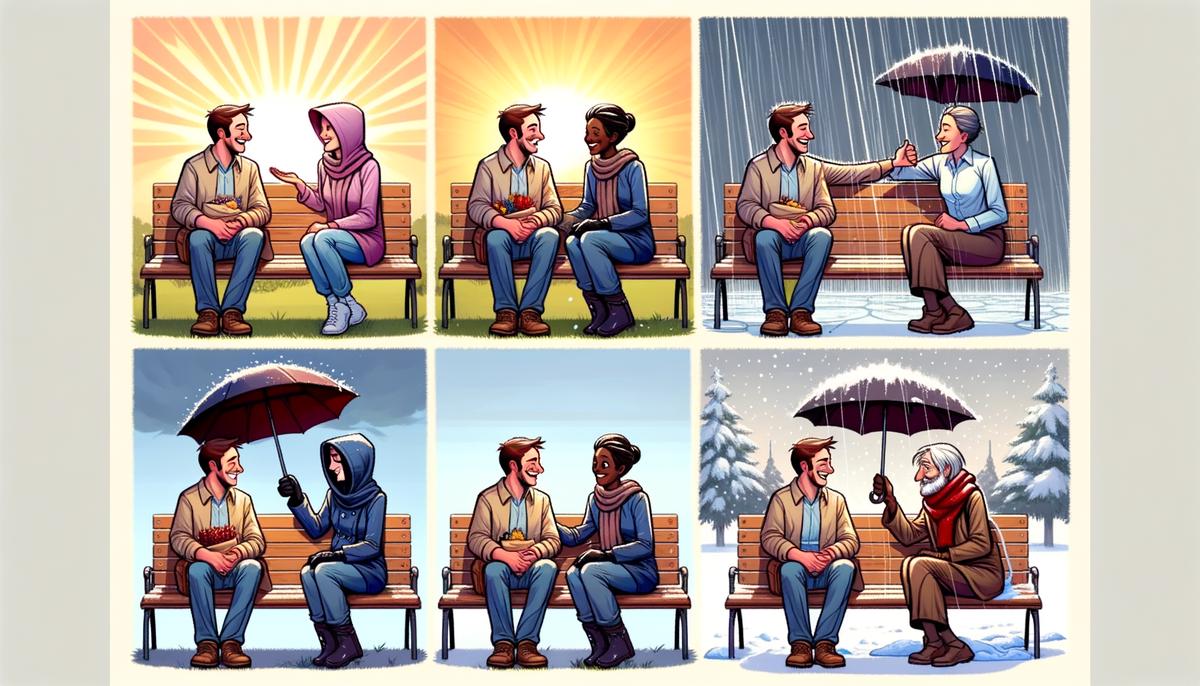
Schedule a Couple’s Therapy Session
Why Consider Couple’s Therapy as a Way to Apologize
Sometimes, words just aren’t enough. You’ve tried the grand gestures, the heart-to-heart talks, and maybe you’ve even penned down your feelings, hoping to mend the bond that’s been frayed. But what if there was a different path to healing, one that not only serves as an apology but also fortifies your relationship in the process? That’s where couple’s therapy comes in, offering a unique blend of reflection, understanding, and a fresh start.
Picture this: You both sit in a welcoming space, free from the distractions and judgments of the outside world. It’s just you two, with a professional guiding you through the thickets of misunderstanding that have grown between you. Through therapy, you’re offering more than just an apology; you’re committing to understanding the depth of your partner’s feelings, acknowledging your role in the hurt, and genuinely striving for change.
Couple’s therapy is like peeling back the layers of an onion; it’s about getting to the core of recurrent issues, beyond the surface-level symptoms. It’s a demonstration of your willingness to dive deep, to explore uncomfortable truths, and to do the hard work together. This in itself is a powerful apology, a testament to your dedication to mend what’s been broken and to grow stronger as a unit.
Moreover, it’s about learning. Therapy equips you with tools and strategies to better communicate, to argue constructively, and to express affection and appreciation more effectively. It’s like rebuilding your relationship with upgraded materials; not only are you fixing what was damaged, but you’re also fortifying it against future storms.
Engaging in couple’s therapy is a declaration that your relationship is worth fighting for. It shows you’re not just looking for a quick fix but are invested in a profound and lasting resolution. You learn to apologize not just through words, but through actions, changes in behavior, and a commitment to being better partners to each other.
And let’s not forget the magic of being heard and understood. Therapy provides a safe harbor for your feelings and experiences. It validates your emotions and offers perspective on how both partners perceive and process their experiences. This mutual understanding fosters empathy, reigniting the warmth and affection that may have been lost in translation.
So, why consider couple’s therapy as a way to apologize? Because it’s about embracing vulnerability, tackling challenges head-on, and embarking on a journey of healing and growth together. It’s a profound way to say “I’m sorry,” paving the way for genuine forgiveness, stronger connections, and a renewed promise to not just survive, but thrive together. Embracing this journey can transform an apology into a stepping stone towards a deeper, more resilient love.
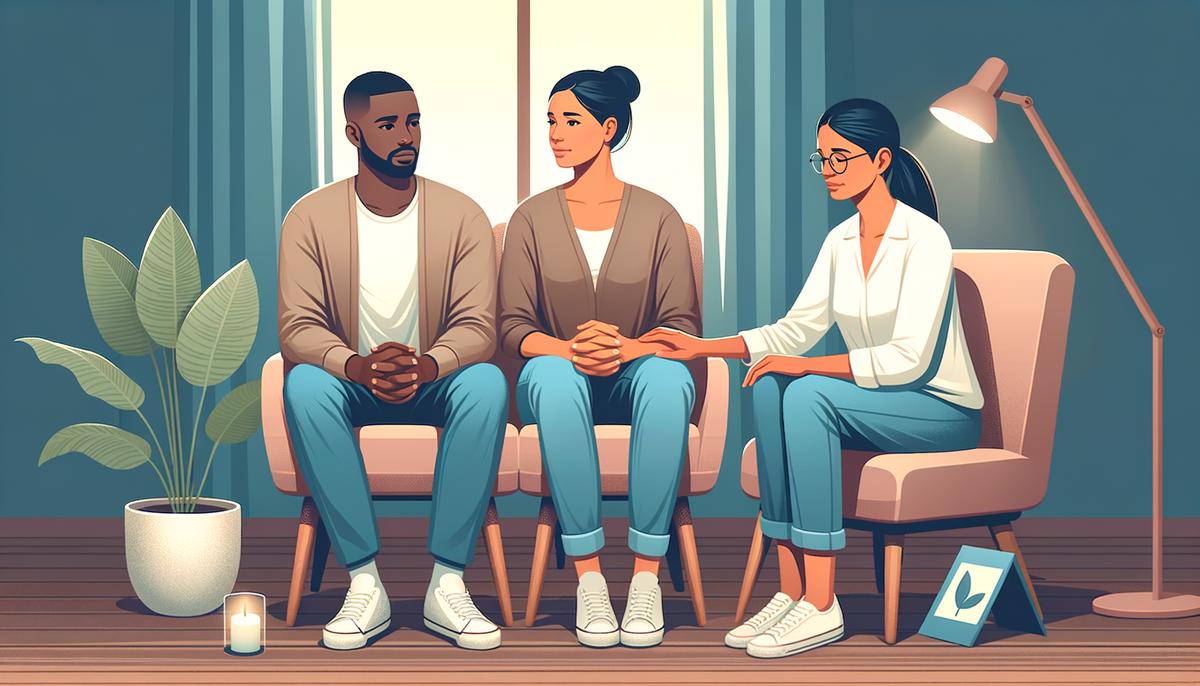
Perform a Personal Act of Service
Ever wonder why sometimes just saying “sorry” doesn’t quite cut it? It’s because our actions often speak louder than words, especially when we’re keen on mending a broken bridge. And what better way to showcase your remorse and dedication to making things right than through a personal act of service. It’s like wrapping your apology in a ribbon of effort, care, and genuine intent to heal any wounds caused.
Picture this: you’ve accidentally forgotten an important date, say a birthday or an anniversary. Ouch, right? Now, imagine instead of just a hurried text apology, you dedicate a day or even a few hours to helping your friend or partner with something they’ve been meaning to get done. Maybe it’s fixing up that wobbly shelf they keep complaining about or getting your hands dirty in the garden they love but can’t keep up with. It’s these moments, these acts of service, that can touch hearts in ways words alone cannot.
When you perform an act of service as an apology, you’re not just saying you’re sorry; you’re showing it. You’re investing your time and energy into something that directly benefits the person you’ve wronged. It’s a beautiful blend of humility and caring, a way to tangibly display, “Hey, I messed up, but I’m here to make your day better because you matter to me.” And this, my friends, injects a dose of warmth and sincerity into the apology process that is hard to match.
These acts don’t need to be grandiose; the beauty lies in their simplicity and thoughtfulness. Been a bit snippy with your sibling? How about you take over their chores for the day or treat them to their favorite meal, prepared with an extra sprinkle of love. It’s these small tokens, these extensions of goodwill, that not only convey your apology but also reinforce your bond, dusting off any negativity and replacing it with positive vibes.
By choosing a personal act of service, you’re essentially wearing your heart on your sleeve, demonstrating that genuine remorse that’s crucial for healing. You’re going the extra mile, moving beyond the conventional to mend fences and build stronger, more resilient bridges. And isn’t that what apologies are truly about? Not just expressing regret but laying down the foundation for forgiveness, understanding, and, ultimately, a deeper connection.
So, the next time you find yourself needing to apologize, remember that actions can indeed speak volumes. A personal act of service could very well turn that apology into a heartfelt moment of reconnection, transforming a simple “I’m sorry” into a powerful catalyst for change and growth in your relationship.
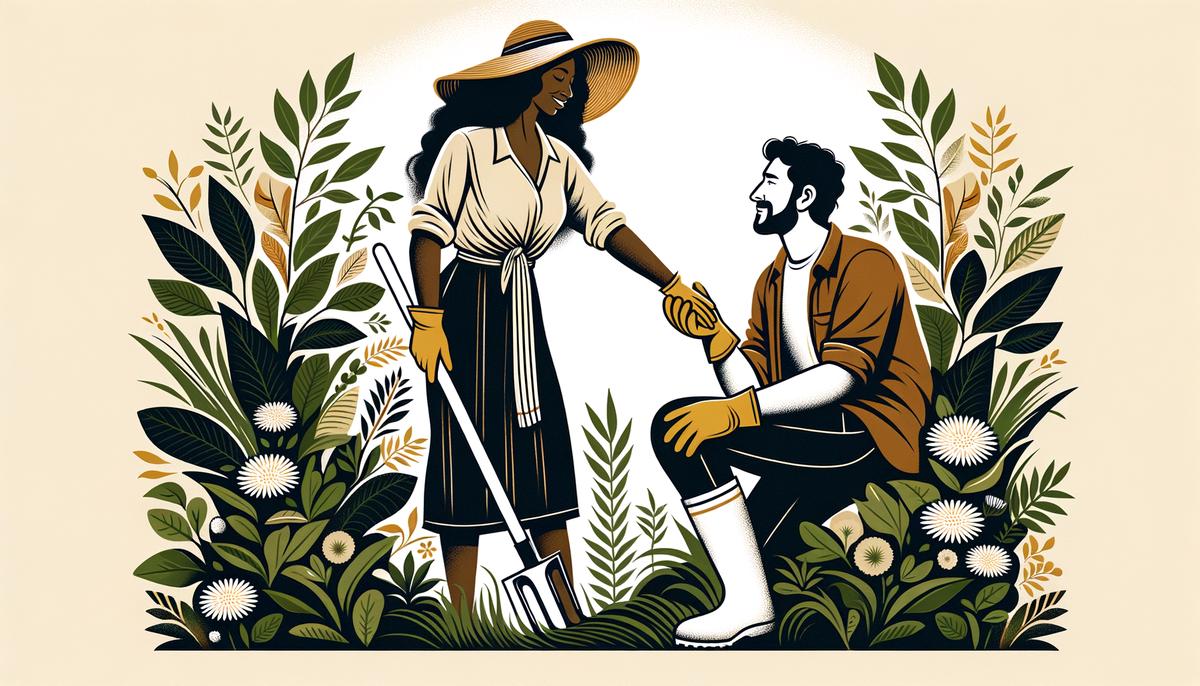
Publicly Acknowledge Your Mistake
Publicly acknowledging a mistake is akin to opening the windows to a room that’s been shut too tight for too long, letting in a fresh breeze of honesty that can do wonders for the soul. It’s about standing in the town square of our lives and declaring, “Yes, I faltered, but I am here to make it right.” Why does this bold move resonate so deeply, not just with the one apologizing but also with those who bear witness to this act of courage?
For starters, it’s a testament to humility, a quality as rare as it is precious in today’s times. Admitting a mistake, especially in the public eye, means stripping away layers of pride and ego, presenting oneself in raw, unedited form. It speaks volumes about a person’s character, proving that integrity shines brighter than the temporary blush of embarrassment.
Moreover, this act of openness turns the solitary journey of regret into a communal path of healing. It enables others to see their own flaws mirrored in your honesty, fostering a spirit of empathy and understanding. In a way, it stitches the fabric of our human connections tighter, reminding us that perfection is a myth and forgiveness, a shared gift.
Let’s not forget the ripple effect of such an apology. Witnessing someone embrace their imperfections and strive for better sets a powerful example. It becomes a beacon for others, lighting the way for how mistakes can be stepping stones rather than stumbling blocks. It’s like sending out an invitation to the world saying, “It’s okay to be imperfect, as long as you are willing to grow.”
And grow we do, through the lessons learned in the aftermath of our errors. Publicly owning up to them isn’t about self-flagellation; it’s about accountability. It tells a story of someone who’s not only aware of their misstep but is also actively seeking redemption. This proactive stance is infectious, inspiring others to embark on their own journeys of self-improvement.
Finally, it is in the public confession of our failings that we find a peculiar kind of freedom. There’s liberation in the acknowledgement that yes, we erred, but here we are, willing to stand back up, dust off our knees, and try once more with a clearer vision and a lighter heart. This is where genuine apology meets the road to recovery, winding its way towards a future where mistakes are but landmarks of our continuous evolution.
In essence, publicly acknowledging a mistake is much more than a mere admission of guilt. It’s a bold, transformative act that celebrates the human capacity for growth, compassion, and above all, redemption. It’s a reminder that in the art of making amends, the most profound apologies are those that are lived, not just uttered.

Through exploring the diverse ways to express an apology, it becomes clear that sincerity is at the heart of making amends. Whether it’s through writing, a personal act, or a direct address, the intent to genuinely seek forgiveness shines through. These methods aren’t just about saying sorry; they’re about demonstrating understanding, respect, and a desire to better our bonds with those we care about. As we reflect on these heartfelt approaches, we’re reminded that at the core of every apology is the hope for renewed connections and the importance of nurturing our relationships with empathy and kindness.
Leave a Reply